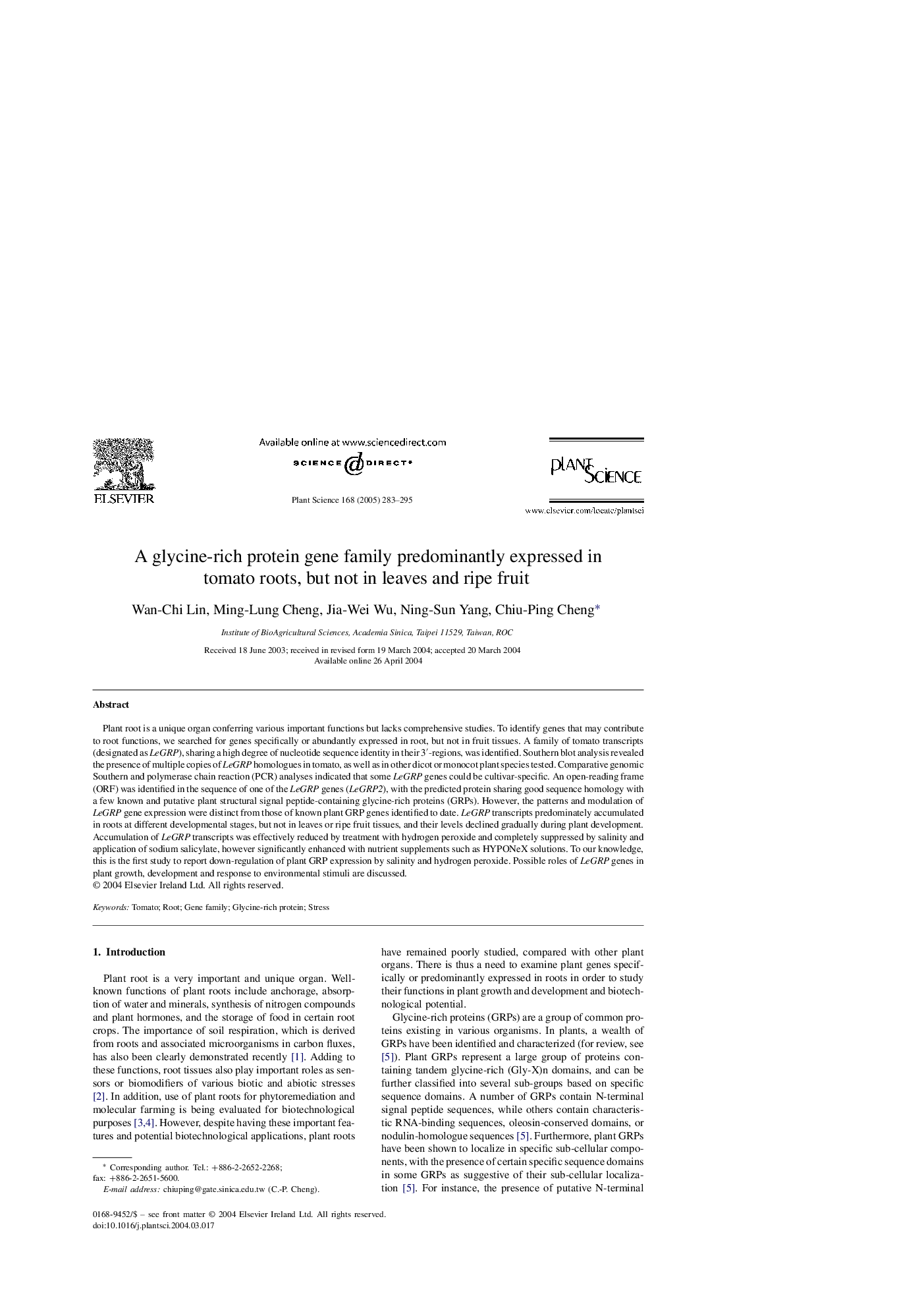| Article ID | Journal | Published Year | Pages | File Type |
|---|---|---|---|---|
| 10840772 | Plant Science | 2005 | 13 Pages |
Abstract
Plant root is a unique organ conferring various important functions but lacks comprehensive studies. To identify genes that may contribute to root functions, we searched for genes specifically or abundantly expressed in root, but not in fruit tissues. A family of tomato transcripts (designated as LeGRP), sharing a high degree of nucleotide sequence identity in their 3â²-regions, was identified. Southern blot analysis revealed the presence of multiple copies of LeGRP homologues in tomato, as well as in other dicot or monocot plant species tested. Comparative genomic Southern and polymerase chain reaction (PCR) analyses indicated that some LeGRP genes could be cultivar-specific. An open-reading frame (ORF) was identified in the sequence of one of the LeGRP genes (LeGRP2), with the predicted protein sharing good sequence homology with a few known and putative plant structural signal peptide-containing glycine-rich proteins (GRPs). However, the patterns and modulation of LeGRP gene expression were distinct from those of known plant GRP genes identified to date. LeGRP transcripts predominately accumulated in roots at different developmental stages, but not in leaves or ripe fruit tissues, and their levels declined gradually during plant development. Accumulation of LeGRP transcripts was effectively reduced by treatment with hydrogen peroxide and completely suppressed by salinity and application of sodium salicylate, however significantly enhanced with nutrient supplements such as HYPONeX solutions. To our knowledge, this is the first study to report down-regulation of plant GRP expression by salinity and hydrogen peroxide. Possible roles of LeGRP genes in plant growth, development and response to environmental stimuli are discussed.
Related Topics
Life Sciences
Agricultural and Biological Sciences
Plant Science
Authors
Wan-Chi Lin, Ming-Lung Cheng, Jia-Wei Wu, Ning-Sun Yang, Chiu-Ping Cheng,
